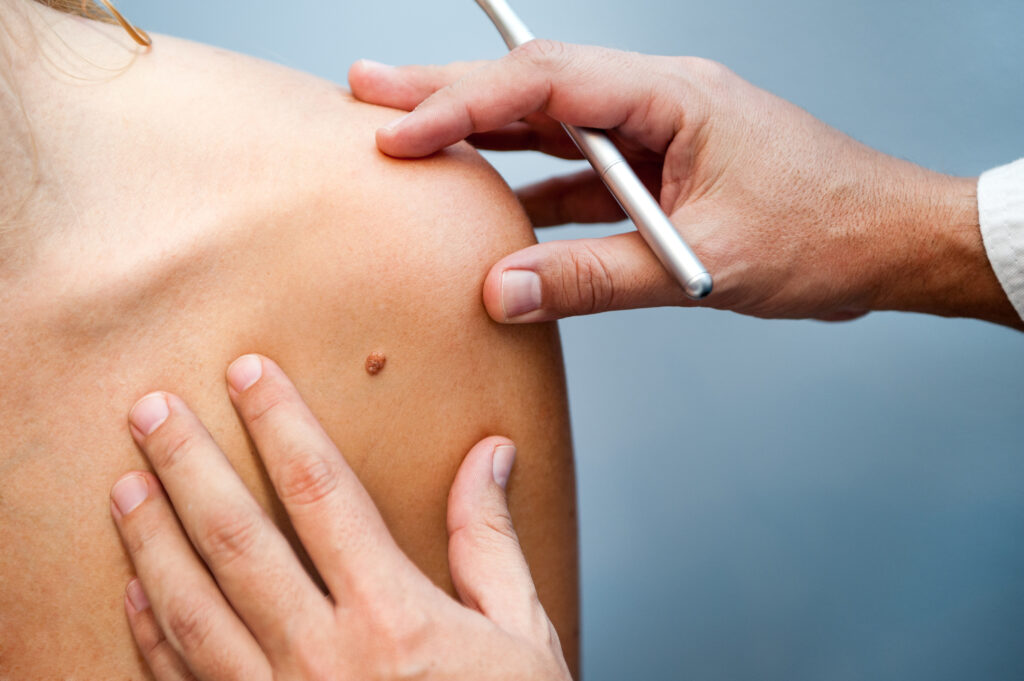Skin Cancer

How much do you know about skin cancer? It’s very common, affecting about 20 percent of people in the United States by the time they turn 70. How do you know if you have skin cancer? What can you do to protect yourself?
Skin cancer typically develops on sun-exposed skin. While many different types of skin cancer exist, there are three that are common:
- Basal cell carcinoma is the most common type of skin cancer. Appearing as a pearl-like, flesh-colored bump or a pink patch of skin, it often develops after years of sun exposure, most commonly on the head, neck, and arms, though they can appear on any part of the body. It’s important to find basal cell carcinoma early so that it doesn’t grow. Left untreated, it can penetrate bones and nerves, causing damage and even disfigurement.
- Squamous cell carcinoma is the second most common. It can look like a firm, red bump, a scaly patch, or a sore that heals and re-opens. This kind of skin cancer typically forms on skin that’s frequently exposed to the sun, like the face, neck, arms, chest, back, and rim of the ear. Like basal cell carcinoma, it needs to be diagnosed and treated early to prevent it from growing deep enough into the skin to cause disfigurement and damage. If it’s not treated, it can spread to other parts of the body. Squamous cell carcinoma can develop from a precancerous skin growth called actinic keratoses (AKs). These dry, scaly patches or spots usually form on sun-damaged skin.
- Melanoma is the most deadly type of skin cancer. It often develops in a mole or as a new dark spot that suddenly appears on the skin. It has a tendency to spread, so early detection and treatment are vital.
When it comes to skin cancer, prevention is the best cure. One of the most important things you can do to avoid skin cancer is to restrict your exposure to UV rays. This means always using sunscreen, avoiding sun exposure in the heat of the day, wearing protective clothing, and avoiding tanning beds. Your diet can also make a difference, so focus on getting plenty of nutrients like antioxidants, Omega-3 fatty acids, vitamins, and minerals. Eating plenty of fruits and vegetables, along with fatty fish, can help you get the right nutrition to prevent and combat skin damage. Skin examination is also important. Check yourself regularly for changes to your skin, especially to any moles. Annually, see your dermatologist for a complete screening.
For a skin cancer screening, make an appointment with Swinyer-Woseth Dermatology. We’re committed to providing superior, professional skin care in a manner that’s practical, efficient, and compassionate. With over 30 years of experience providing dermatological services in Salt Lake City, we provide a variety of services, from cosmetic skincare to treatment for skin cancer. Our team of board-certified dermatologists and licensed cosmetic service providers are here to provide you the care you need in a comfortable, professional atmosphere. Call (801) 682-4715 or contact us through our website.
